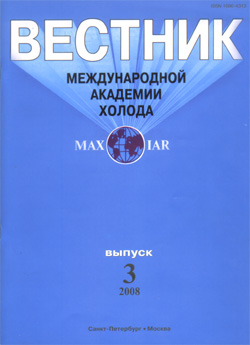
Choosing the pattern of whole body cryotherapy

Annotation
Whole body cryotherapy (WBC) is a process targeted at cooling the human body surface down to temperatures close to ‒2°C. At such temperature, cold receptors of the skin suffer intensive stimulation and send a powerful signal to the central nervous system warning it about a threat of hypothermia. With proper choice of the cooling time and cooling gas temperature it is possible to increase the efficiency of WBC without endangering the patient’s health. The criterion of such efficiency is the duration of analgesic effect (effective time). Numerical experiments on WBC simulation have shown that when the individual pattern is used the effective time is not reduced until the duration of the start-up period exceeds 160 seconds. Low efficiency of the group WBC pattern is an unsolvable disadvantage of multi-person cryotherapy system models.
Keywords
Постоянный URL
Articles in current issue
- World tendencies and priorities in development of low-temperature engineering
- Use of effective radiation in the refrigerating system of an open-air ice skating rink
- Second virial coefficient of methane
- Nitrogen cold supply system with a vortex tube for a tunnel fast-freezing unit
- Concerning proper formulation of the problem of fluid flow in a pipe
- Methodology for comparing the thermodynamic cycle efficiency in refrigerating and heat pump systems
- Asymmetric scaling equation of state for the R23 refrigerant
- Researching operation modes of a cryogenic fish freezer
- Nanostructures based on magnesium silicide as effective materials for thermoelectric energy conversion
- Efficiency of spray cooling towers
- Dielectric permittivity of ammonia used as a working substance of refrigerating plants
- Calculation of capillary tubes using dimensionless equations
- Nonlinear thermoelectric phenomena
- Production of pure industrial gases by air separators in piston compressors modernized by BARRENS for the work without cylinder oiling
- Identifying effective thermal and hydrodynamic properties of heterogeneous porous and biomaterials by means of fragmentation analysi
- Dynamic methods for studying water-containing materials
